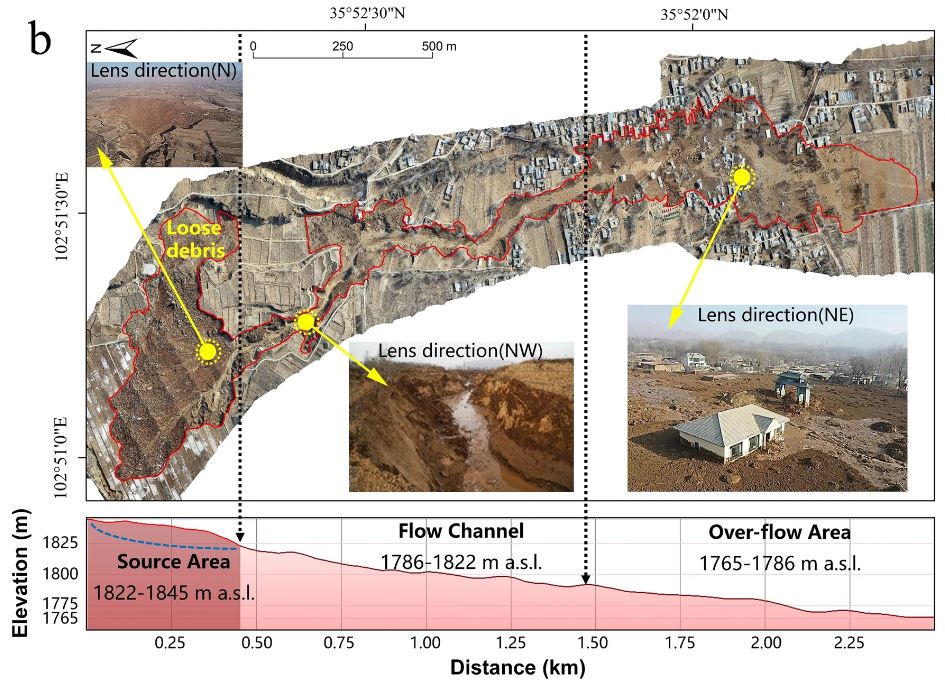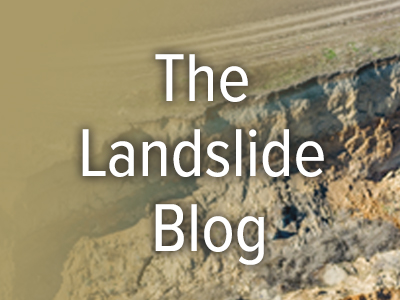The Landslide Blog is written by Dave Petley, who is widely recognized as a world leader in the study and management of landslides.
A very interesting paper (Shi et al. 2024) has just been published, open access, in the journal Scientific Reports, describing an “earthquake ripple hazard”, a terminology that I have not come across previously.
This novel hazard is described in the context of the 18 December 2023 Ms=6.2 Jishishan earthquake in Gansu Province, China. This event occurred in an area of known seismic hazard, in a landscape with extensive deposits of loess, which has high potential for liquefaction. Shi et al. (2024) note that, despite the modest size of the earthquake, it caused “serious casualties and property losses in the Jintian and Caotan Villages, which are located on the terraces of the main stream of the Yellow River.”
The cause of the losses is ascribed to the “Jishishan earthquake ripple hazard”, which is the novel terminology. The authors have included the following figure, which shows the aftermath of this event. The location is [35.87998, 102.85346]:-

This is a coseismic liquefaction flowslide in loess and red clay. It is worth looking at the supplemental materials for this paper (NB this is a Word file), which provide a huge amount of additional information about the landslide, including detailed images. Shi et al. (2024) describe this as an earthquake ripple hazard because it was caused “the upwelling of confined water, which compressed the gas in the upper vadose zone and broke through the surface frozen layer, resulting in a powerful sediment and soil spray. This spurt accumulated a 1.5–5.0 m thick mixed sand and soil of approximately 107,500 m3 in volume, covering an area of 33,000 m2.”
It is interesting to consider whether this event justifies new terminology. To me, this is a reasonably strightforward liquefaction-induced landslide, albeit with fascinating dynamics that are well-described by the authors. This terminology probably justifies a more detailed debate, so please do contribute via the comments. This is not to criticise the authors in any way – the paper is a very worthwhile and interesting contribution, and it is right that we question our analysis of these events.
The underlying point of the paper is to explore whether the Jishishan earthquake ripple hazard provides an explanation for the impact of an earlier event, which saw the destruction of a settlement called Lajia at about 4000 years BP. Shi et al. (2024) propose that this type of complex coseismic liquefaction-induced landslide might account for the damage that archaeologists have observed at Lajia, as opposed to other explanations involving river floods or the collapse of a valley-blocking landslide dam. That deserves a separate blog post.
In the meantime, this is very interesting study that I hope will stimulate much discussion. The flowslide at Jintian killed at least 20 people and destroyed 51 houses (Wang et al. 2024). As such, this was a very significant event in its own right.
References
Shi, P. et al. 2024. Recent Jishishan earthquake ripple hazard provides a new explanation for the destruction of the prehistoric Lajia Settlement 4000a B.P. Scientific Reports 14, 11630. https://doi.org/10.1038/s41598-024-60433-8
Wang L. et al. 2024. Characteristics and lessons of liquefaction-triggered large-scale flow slide in loess deposit during Jishishan M6.2 earthquake in 2023. Chinese Journal of Geotechnical Engineering, 46 (2), 235-243. https://doi.org/10.11779/CJGE20240038.

